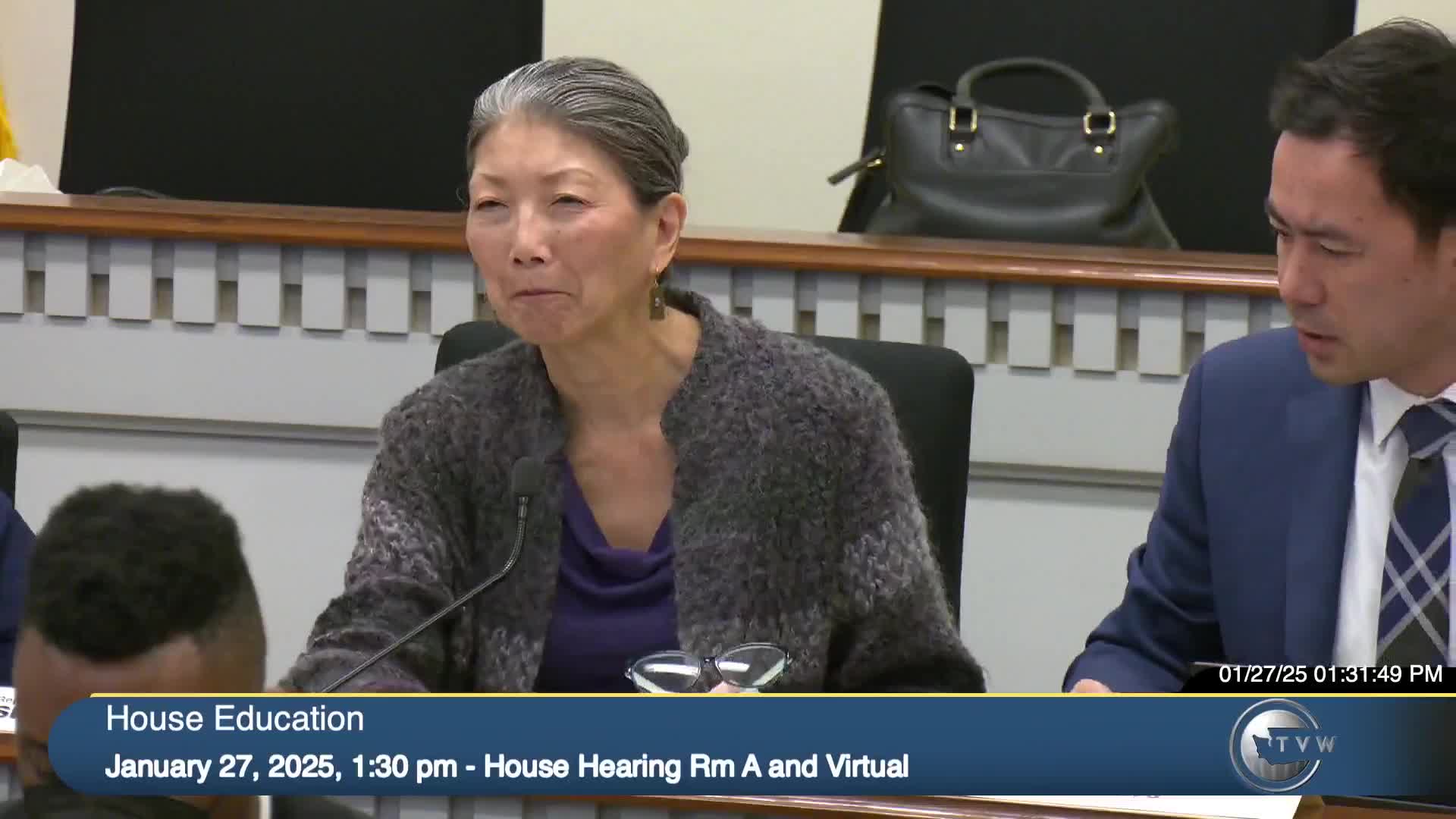State officials outline instructional hours, waivers and school scheduling tools
January 27, 2025 | Education, House of Representatives, Legislative Sessions, Washington
This article was created by AI summarizing key points discussed. AI makes mistakes, so for full details and context, please refer to the video of the full meeting. Please report any errors so we can fix them. Report an error »

Becky Wallace, assistant superintendent of secondary education and pathway preparation at the Office of the Superintendent of Public Instruction (OSPI), told the House Education Committee the statute around basic education sets the minimum instructional requirements districts must meet.
Wallace said the legislature and State Board of Education set the hour-and-day minimums that districts must follow and that OSPI provides calculation tools to convert local bell schedules into FTE and minutes. "The statute around basic education does set forth minimum instructional requirements, that's where the hours and days requirements come from," she said.
The nut graf: the committee heard that Washington law requires a districtwide annual average of instructional hours (an "annual average of 1,027 hours" was cited) and 180 student days but allows targeted statutory exceptions and waivers for specific circumstances.
OSPI staff summarized common waivers: short exceptions for kindergarten family meetings (up to three days), graduating senior noninstructional days (up to five days), emergency school closure waivers that districts use year by year, parent-teacher conference day waivers, and an "economy and efficiency" waiver that permits a flexible calendar for districts under a statutory enrollment cap. Wallace said OSPI began administering waivers in 2018 and that some waiver turnaround times can be very fast; "The turnaround time for waivers can be less than three days," she said.
Committee members pressed staff on how the statutory hours relate to funding and on whether heat or other conditions qualify as emergency closures. Wallace said the report OSPI keeps lists districts' stated reasons for emergency waivers and OSPI would follow up on whether excessive heat had been used as a rationale.
The board-level role: Randy Spalding, executive director of the State Board of Education, explained how instructional-time rules interact with local credit systems. "Instructional time . . . does include certain breaks like passing time and recess," he said, noting districts commonly adopt 6- or 7-period bell schedules and that seat-time is still a sticky policy because reporting and funding expectations require translating local schedules back into traditional measures.
The committee also heard that districts may use equivalency credit and alternative delivery models (ALE, CTE, skill centers, apprenticeship pathways) to serve students, but that policy and reporting barriers remain.
Ending: OSPI staff offered to provide district-level waiver data on request and emphasized that districts adopt a range of schedules to meet the statutory minimums while using OSPI'provided templates and tools to remain compliant.
Wallace said the legislature and State Board of Education set the hour-and-day minimums that districts must follow and that OSPI provides calculation tools to convert local bell schedules into FTE and minutes. "The statute around basic education does set forth minimum instructional requirements, that's where the hours and days requirements come from," she said.
The nut graf: the committee heard that Washington law requires a districtwide annual average of instructional hours (an "annual average of 1,027 hours" was cited) and 180 student days but allows targeted statutory exceptions and waivers for specific circumstances.
OSPI staff summarized common waivers: short exceptions for kindergarten family meetings (up to three days), graduating senior noninstructional days (up to five days), emergency school closure waivers that districts use year by year, parent-teacher conference day waivers, and an "economy and efficiency" waiver that permits a flexible calendar for districts under a statutory enrollment cap. Wallace said OSPI began administering waivers in 2018 and that some waiver turnaround times can be very fast; "The turnaround time for waivers can be less than three days," she said.
Committee members pressed staff on how the statutory hours relate to funding and on whether heat or other conditions qualify as emergency closures. Wallace said the report OSPI keeps lists districts' stated reasons for emergency waivers and OSPI would follow up on whether excessive heat had been used as a rationale.
The board-level role: Randy Spalding, executive director of the State Board of Education, explained how instructional-time rules interact with local credit systems. "Instructional time . . . does include certain breaks like passing time and recess," he said, noting districts commonly adopt 6- or 7-period bell schedules and that seat-time is still a sticky policy because reporting and funding expectations require translating local schedules back into traditional measures.
The committee also heard that districts may use equivalency credit and alternative delivery models (ALE, CTE, skill centers, apprenticeship pathways) to serve students, but that policy and reporting barriers remain.
Ending: OSPI staff offered to provide district-level waiver data on request and emphasized that districts adopt a range of schedules to meet the statutory minimums while using OSPI'provided templates and tools to remain compliant.
View full meeting
This article is based on a recent meeting—watch the full video and explore the complete transcript for deeper insights into the discussion.
View full meeting
